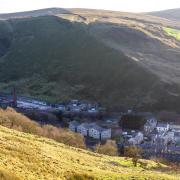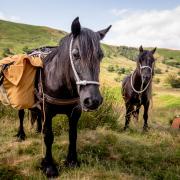Mountain bikers are being drawn here from all over the UK thanks to the vision of one man. Jon Sparks reports

Mountain biking seems to hide in plain sight. Britain’s mountain bikers have won more World Championships than their roadie brethren, but to far less acclaim. Recreational mountain biking is equally overlooked. Many readers will be surprised to learn that Lancashire’s Gisburn Forest is a major venue, regularly scoring highly in polls for the UK’s best trail centre, and repeatedly acclaimed as the best in England.
Jargon alert: what is a trail centre? The common factor is purpose-built tracks, usually de-signed to be ridden in one direction and segregated from other users. Some simply have a few kilometres of trail and a car-park while others, like Grizedale Forest in the Lakes, have a café, bike-shop and bike-hire on site. Gisburn Forest falls somewhere in between. It has (as yet) no shop or bike-hire, and the café has been a bit of a thorny issue, but it remains a hit thanks to the quality of its trails.
Gisburn is no johnny-come-lately. In fact, it was arguably one of the first trail centres in the UK. And its entire history as a mountain bike destination has been overseen by one man, Martin Colledge, land-manager for the Forestry Commission, which leases the forest from United Utilities.
When early mountain bikes reached the UK in the 1980s, it was hard to know where you could ride. The internet was just a gleam in a mad scientist’s eye. The first mountain bike guidebook to the Lakes and Dales, in 1989, didn’t cover the Forest of Bowland. Even now, Bowland is poorly supplied with Rights of Way. Its moors, and its miles of shooters’ tracks, were legally opened to walkers in 2005 but bikes gained no additional rights.

In 1989, when Martin arrived in Gisburn, bikers were already exploring the forest roads but most of these were cul-de-sacs. He realised the riding would be more appealing if the road-ends were linked to create loops. In 1995–96, almost single-handed, he began building these links, making them some of the earliest purpose-built singletrack (jargon for a narrow trail) in England.
Opened by Chris Boardman, more usually associated with Olympic velodromes and the Tour de France, the trails were well-received, bringing many visitors to this part of the Ribble Valley, and trade to local cafes and pubs. However, mountain bikes, and riders’ skill and ambition, were evolving rapidly. Soon, Martin found unofficial trails and jumps appearing. Rather than simply bulldozing these, he made contact with the builders, aiming to harness their energy and enthusiasm and ensure that trails were built sustainably and as safely as possible. He grimaces as he recalls finding jumps built ‘out of mud and bits of rotten wood that they’ve found on the forest floor’.
With his unrivalled knowledge of the forest, he had a mental picture of where trails could – and couldn’t – go, factoring in ‘where environmental interest was, where public footpaths were, where we had good, interesting terrain’.
To involve riders further, he arranged a meeting at the Dog and Partridge in nearby Tosside, expecting to attract a handful of people. It was packed. He invited visions for new trails and received an overwhelming response. All this, plus input from professional trail-builder Rowan Sorrell, went into a new clutch of trails inaugurated in 2009.

The core of the network is ‘The 8’ – named for its shape on the map. This 18km trail is graded red (mountain bike trails are usually graded like ski runs - green, blue, red and black), within the abilities of most regular mountain bikers. A shorter blue trail, more suited to families and casual riders, mixes forest roads with easier singletrack. There are optional black sections alongside parts of The 8 and two separate downhill tracks – the relatively straightforward Hope Line and Leap of Faith, which includes some huge jumps and is strictly for the experts.
Development was funded by various bodies, and relied heavily on volunteer efforts – roughly half of The 8’s lower loop is volunteer-built, for instance. The Gisburn Forest Mountain Bike Trail Development Facebook group now has over 4500 members, though only a minority are regular trailbuilders.
Even with generous volunteer efforts, maintaining trails and developing new ones requires money for materials and sometimes to employ professional contractors. Still, for several years after 2009, parking remained free; there was no revenue-stream to support further developments.
This changed with the latest step forward, the establishment of The Hub. There’s a larger car park (the existing one’s often overflowed) and toilet block. Income from parking charges now roughly balances ongoing maintenance costs. It hasn’t all been plain sailing: the original tenants of the café have gone and refreshment has been limited to a tented ‘pop-up’ café at weekends and holiday periods.
This means Gisburn’s facilities are still slightly spartan compared to some other centres, yet it still attracts riders even on miserable midweek days. At busy times the car parks are often close to capacity. Most travel around an hour, from centres in Lancashire, West Yorkshire, north Manchester and so on, but Gisburn also draws riders from further afield. One such is Becky Nokes, from Wolverhampton. Like many visitors, she rates the trails highly, with special mention for the Hope Line. ‘It immediately put a smile on my face,’ she said. Just what Martin Colledge was hoping for when he started it all 20 years ago.
To find out more, go to www.gisburnbiketrails.com



























